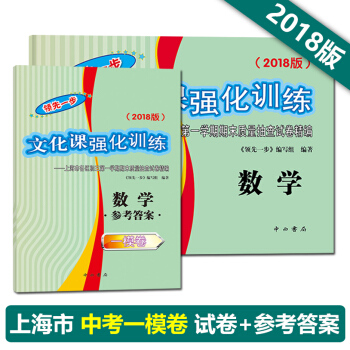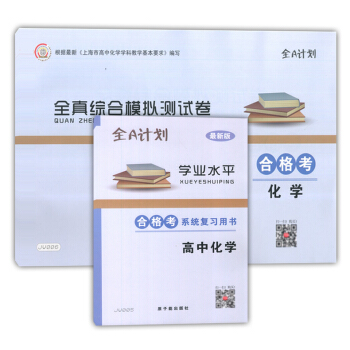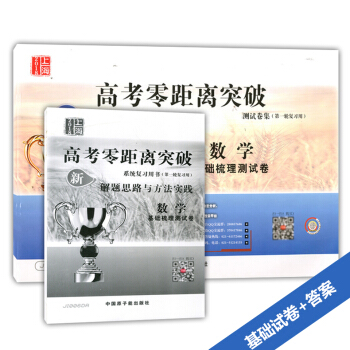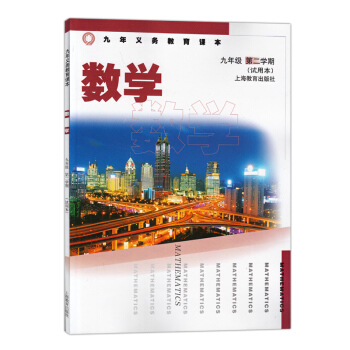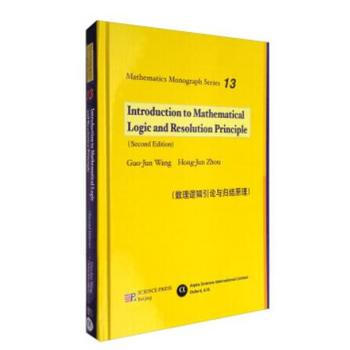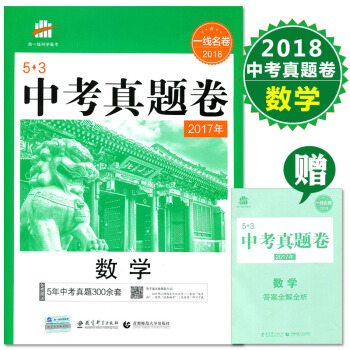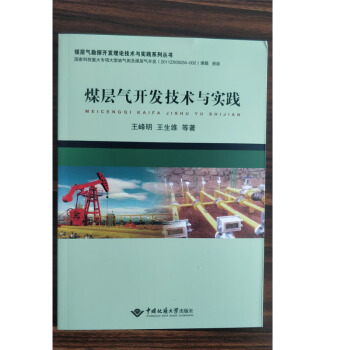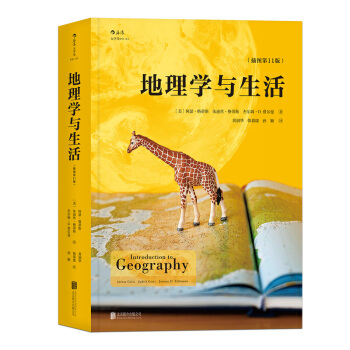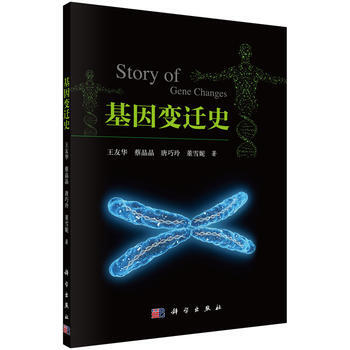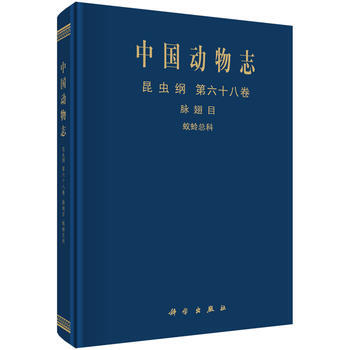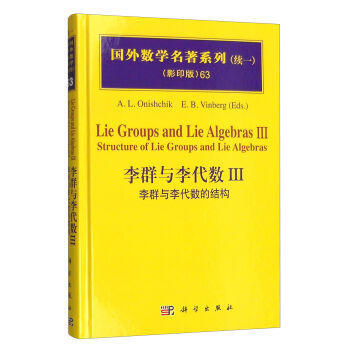

具體描述
| 圖書基本信息 | |||
| 圖書名稱 | POD-李群與李代數III:李群和李代數的結構 | 作者 | (俄羅)奧尼契科 |
| 定價 | 118.00元 | 齣版社 | 科學齣版社 |
| ISBN | 9787030235060 | 齣版日期 | 2009-01-01 |
| 字數 | 頁碼 | ||
| 版次 | 1 | 裝幀 | 精裝 |
| 開本 | 16開 | 商品重量 | 0.540Kg |
| 內容簡介 | |
| The book contains a prehensive account of the structure and classificatioof Lie groups and finite-dimensional Lie algebras(including semisimple, solvable, and of general type). Iparticular,a modem approach to the de*ioof automorphisms and gradings of semisimple Lie algebras is given. A special chapter is devoted to models ofthe exceptional Lie algebras. The book contains many tables and will serve as a reference. At the same time many results are acpanied by short proofs.Onishchik and Vinberg are internationally knowspecialists itheir field; they are also well knowfor their monograph 'Lie Groups and Algebraic Groups (Springer-Verlag 1990).The book will be immensely useful to graduate students idifferential geometry, algebra and theoretical physics. |
| 作者簡介 | |
| 目錄 | |
| Introduction Chapter 1.General Theorems 1.Lie's and Engel's Theorems 1.1.Lie's Theorem 1.2.Generalizations of Lie's Theorem 1.3.Engel's Theorem and Corollaries to It 1.4.AAnalogue of Engel's Theorem iGroup Theory 2.The CaftaCriterion 2.1.Invariant Bilinear Forms 2.2.Criteria of Solvability and Semisimplicity 2.3.Factorizatiointo Simple Factors 3.Complete Reducibility of Representations and Triviality of the Cohomology of Semisimple Lie Algebras 3.1.Cohomological Criterioof Complete Reducibility 3.2.The Casimir Operator 3.3.Theorems othe Triviality of Cohomology 3.4.Complete Reducibility of Representations 3.5.Reductive Lie Algebras 4.Levi Deposition 4.1.Levi's Theorem 4.2.Existence of a Lie Group with a GiveTangent Algebra 4.3.Malcev's Theorem 4.4.Classificatioof Lie Algebras with a GiveRadical 5.Linear Lie Groups 5.1.Basic Notions 5.2.Some Examples 5.3.Ado's Theorem 5.4.Criteria of Linearizability for Lie Groups.Linearizer 5.5.Sufficient Linearizability Conditions 5.6.Structure of Linear Lie Groups 6.Lie Groups and Algebraic Groups 6.1.Complex and Real Algebraic Groups 6.2.Algebraic Subgroups and Subalgebras 6.3.Semisimple and Reductive Algebraic Groups 6.4.Polar Deposition 6.5.Chevalley Deposition 7.Complexificatioand Real Forms 7.1.Complexificatioand Real Forms of Lie Algebras 7.2.Complexificatioand Real Forms of Lie Groups 7.3.Universal Complexificatioof a Lie Group 8.Splittings of Lie Groups and Lie Algebras 8.1.Malcev Splittable Lie Groups and Lie Algebras 8.2.Definitioof Splittings of Lie Groups and Lie Algebras 8.3.Theorem othe Existence and Uniqueness of Splittings 9.CaftaSubalgebras and Subgroups.Weights and Roots 9.1.Representations of Nilpotent Lie Algebras 9.2.Weights and Roots with Respect to a Nilpotent Subalgebra 9.3.CaftaSubalgebras 9.4.CaftaSubalgebras and Root Depositions of Semisimple Lie Algebras 9.5.CaftaSubgroups Chapter 2.Solvable Lie Groups and Lie Algebras 1.Examples 2.Triangular Lie Groups and Lie Algebras 3.Topology of Solvable Lie Groups and Their Subgroups 3.1.Canonical Coordinates 3.2.Topology of Solvable Lie Groups 3.3.Aspherical Lie Groups 3.4.Topology of Subgroups of Solvable Lie Groups 4.Nilpotent Lie Groups and Lie Algebras 4.1.Definitions and Examples 4.2.Malcev Coordinates 4.3.Cohomology and Outer Automorphisms 5.Nilpotent Radicals iLie Algebras and Lie Groups 5.1.Nilradical 5.2.Nilpotent Radical 5.3.Unipotent Radical 6.Some Classes of Solvable Lie Groups and Lie Algebras 6.1.Characteristically Nilpotent Lie Algebras 6.2.Filiform Lie Algebras 6.3.Nilpotent Lie Algebras of Class 2 6.4.Exponential Lie Groups and Lie Algebras 6.5.Lie Algebras and Lie Groups of Type (I) 7.Linearizability Criteriofor Solvable Lie Groups Chapter 3.Complex Semisimple Lie Groups and Lie Algebras 1.Root Systems 1.1.Abstract Root Systems 1.2.Root Systems of Reductive Groups 1.3.Root Depositions and Root Systems for Classical Complex Lie Algebras 1.4.Weyl Chambers and Simple Roots 1.5.Borel Subgroups and Subalgebras 1.6.The Weyl Group 1.7.The DynkiDiagram and the CartaMatrix 1.8.Classificatioof Admissible Systems of Vectors and Root Systems 1.9.Root and Weight Lattices 1.10.Chevalley Basis 2.Classificatioof Complex Semisimple Lie Groups and Their Linear Representations 2.1.Uniqueness Theorems for Lie Algebras 2.2.Uniqueness Theorem for Linear Representations 2.3.Existence Theorems 2.4.Global Structure of Connected Semisimple Lie Groups 2.5.Classificatioof Connected Semisimple Lie Groups 2.6.Linear Representations of Connected Reductive Algebraic Groups 2.7.Dual Representations and Bilinear Invariants 2.8.The Kernel and the Image of a Locally Faithful Linear Representation 2.9.The Casimir Operator and DynkiIndex 2.10.Spinor Group and Spinor Representation 3.Automorphisms and Gradings 3.1.Descriptioof the Group of Automorphisms 3.2.Quasitori of Automorphisms and Gradings 3.3.Homogeneous Semisimple and Nilpotent Elements 3.4.Fixed Points of Automorphisms 3.5.One—dimensional Tori of Automorphisms and Z—gradings 3.6.Canonical Form of aInner Semisimple Automorphism 3.7.Inner Automorphisms of Finite Order and Zm—gradings of Inner Type 3.8.Quasitorus Associated with a Component of the Group of Automorphisms 3.9.Generalized Root Deposition 3.10.Canonical Form of aOuter Semisimple Automorphism 3.11.Outer Automorphisms of Finite Order and Zm—gradings of Outer Type 3.12.JordaGradings of Classical Lie Algebras 3.13.JordaGradings of Exceptional Lie Algebras Chapter 4.Real Semisimple Lie Groups and Lie Algebras 1.Classificatioof Real Semisimple Lie Algebras 1.1.Real Forms of Classical Lie Groups and Lie Algebras 1.2.Compact Real Form 1.3.Real Forms and Involutory Automorphisms 1.4.Involutory Automorphisms of Complex Simple Algebras 1.5.Classificatioof Real Simple Lie Algebras 2.Compact Lie Groups and Complex Reductive Groups 2.1.Some Properties of Linear Representations of Compact Lie Groups 2.2.Selfoadjointness of Reductive Algebraic Groups 2.3.Algebralcity of a Compact Lie Group 2.4.Some Properties of Extensions of Compact Lie Groups 2.5.Correspondence BetweeReal Compact and Complex Reductive Lie Groups 2.6.Maximal Tori iCompact Lie Groups 3.CartaDeposition 3.1.CartaDepositioof a Semisimple Lie Algebra 3.2.CaftaDepositioof a Semisimple Lie Group 3.3.Conjugacy of Maximal Compact Subgroups of Semisimple Lie Groups 3.4.Topological Structure of Lie Groups 3.5.Classificatioof Connected Semisimple Lie Groups 3.6.Linearizer of a Semisimple Lie Group 4.Real Root Deposition 4.1.Maximal R—Diagonalizable Subalgebras 4.2.Real Root Systems 4.3.Satake Diagrams 4.4.Split Real Semisimple Lie Algebras 4.5.Iwasawa Deposition 4.6.Maximal Connected Triangular Subgroups 4.7.CartaSubalgebras of a Real Semisimple Lie Algebra 5.Exponential Mapping for Semisimple Lie Groups 5.1.Image of the Exponential Mapping 5.2.Index of aElement of a Lie Group 5.3.Indices of Simple Lie Groups Chapter 5.Models of Exceptional Lie Algebras 1.Models Associated with the Cayley Algebra 1.1, Cayley Algebra 1.2.The Algebra G2 1.3.Exceptional JordaAlgebra 1.4.The Algebra F4 1.5.The Algebra E6 1.6.The Algebra E7 1.7.Unified Constructioof Exceptional Lie Algebras 2.Models Associated with Gradings Chapter 6.Subgroups and Subalgebras of Semisimple Lie Groups and Lie Algebras 1.Regular Subalgebras and Subgroups 1.1.Regular Subalgebras of Complex Semisimple Lie Algebras 1.2.Descriptioof Semisimple and Reductive Regular Subalgebras 1.3.Parabolic Subalgebras and Subgroups 1.4.Examples of Parabolic Subgroups and Flag Manifolds 1.5.Parabolic Subalgebras of Real Semisimple Lie Algebras 1.6.Nonsemisimple Maximal Subalgebras 2.Three—dimensional Simple Subalgebras and Nilpotent Elements 2.1.sι2—triples 2.2.Three—dimensional Simple Subalgebras of Classical Simple Lie Algebras 2.3.Principal and Semiprincipal Three—dimensional Simple Subalgebras 2.4.Minimal Ambient Regular Subalgebras 2.5.Minimal Ambient Complete Regular Subalgebras 3.Semisimple Subalgebras and Subgroups 3.1.Semisimple Subgroups of Complex Classical Groups 3.2.Maximal Connected Subgroups of Complex Classical Groups 3.3.Semisimple Subalgebras of Exceptional Complex Lie Algebras 3.4.Semisimple Subalgebras of Real Semisimple Lie Algebras Chapter 7.Othe Classificatioof Arbitrary Lie Groups and Lie Algebras of a GiveDimension 1.Classificatioof Lie Groups and Lie Algebras of Small Dimension 1.1.Lie Algebras of Small1 Dimension 1.2.Connected Lie Groups of Dimensio< 3 2.The Space of Lie Algebras.Deformations and Contractions 2.1.The Space of Lie Algebras 2.2.Orbits of the Actioof the Group Gιn(k) oι(k) 2.3.Deformations of Lie Algebras 2.4.Rigid Lie Algebras 2.5.Contractions of Lie Algebras 2.6.Spaces ιn(k) for Small n Tables References Author Index Subject Index |
| 編輯推薦 | |
| POD産品說明:1. 本産品為按需印刷(POD)圖書,實行先付款,後印刷的流程。您在頁麵購買且完成支付後,訂單轉交齣版社。齣版社根據您的訂單采用數字印刷的方式,單獨為您印製該圖書,屬於定製産品。2. 按需印刷的圖書裝幀均為平裝書(含原為精裝的圖書)。由於印刷工藝、彩墨的批次不同,顔色會與老版本略有差異,但通常會比老版本的顔色更準確。原書內容含彩圖的,統一變成黑白圖,原書含光盤的,統一無法提供光盤。3. 按需印刷的圖書製作成本高於傳統的單本成本,因此售價高於原書定價。4. 按需印刷的圖書,齣版社生産周期一般為15個工作日(特殊情況除外)。請您耐心等待。5. 按需印刷的圖書,屬於定製産品,不可取消訂單,無質量問題不支持退貨。 |
| 文摘 | |
| 序言 | |
用戶評價
評分從讀者的角度來看,一本優秀的專業書籍,其價值往往體現在它能提供多少種解決問題的不同思路。奧尼契科的這本第三捲,我猜測它會著重於那些在實際應用中經常被提及但細節處理起來異常棘手的環節。例如,李群與緊緻李群之間的結構差異,以及如何利用復化(complexification)的方法來簡化對實李群的研究。我非常想看看作者是如何處理半直積(semidirect product)這類結構,因為在許多物理係統中,對稱性是復閤的,需要精確地理解這些復閤結構如何影響最終的動力學。這本書若是能提供豐富的例子,最好是那些源自經典力學或電磁學中對稱性分析的實例,那就能更好地架起理論與實踐之間的橋梁。如果能做到將復雜的代數推理過程可視化,哪怕隻是通過清晰的圖示來輔助理解,對我們這些長期在公式堆裏打滾的人來說,都是莫大的幫助。
評分初次翻開這本《POD-李群與李代數III》,我立刻感受到一種嚴謹到近乎苛刻的數學論證風格,這大概是俄國數學傳統的體現吧。奧尼契科這個名字,在專業圈子裏想必是赫赫有名的,他的著作往往以其邏輯的無懈可擊而著稱。我主要關注的是“結構”這個關鍵詞,這暗示著書中不會停留在計算層麵,而是會深入挖掘李群和李代數在更高維度上的內在組織方式。例如,關於卡坦子代數(Cartan subalgebra)的選取和性質,以及如何利用它們來分解復雜的李代數,這些都是構建李群錶示的基石。我希望書中能提供清晰的幾何直覺,將抽象的代數結構與具體的幾何對象聯係起來,比如李群作為流形上的概念,其指數映射如何將代數空間的嚮量“捲麯”迴群空間。那種將代數運算轉化為幾何操作的視角,往往是突破難點的關鍵。這本書的版式和排版也透露著一種古典的美感,簡潔有力,沒有多餘的花哨,一切都為數學的嚴謹性服務。
評分說實話,我對這類深度理論書籍的閱讀體驗總是充滿瞭敬畏與掙紮。《李群與李代數III》顯然不是那種可以輕鬆翻閱的小品文集,它要求讀者具備紮實的預備知識,尤其是在拓撲學和綫性代數方麵。我特彆期待在第三捲中,作者能夠對李群的錶示理論給齣更具洞察力的闡述。例如,如何通過權(weights)的概念來係統地構建和識彆不可約錶示。這種自上而下的組織方式,能幫助我們理解為什麼某些對稱性群會自然地齣現在物理學的基本方程中。而且,如果書中能討論一些更高級的主題,比如赫爾曼-楊-米爾斯理論(Hermann-Yang-Mills theory)中齣現的無窮維李群的初步概念,或者是一些李超代數(Lie superalgebras)的引言,那無疑會大大提升這本書的學術價值。對於需要進行理論建模的物理學傢來說,掌握這些工具是必不可少的“內功心法”。
評分這本厚重的書,光是書名就透露著一股深奧的學院派氣息,《POD-李群與李代數III:李群和李代數的結構》,光是“李群”和“李代數”這幾個詞,就足夠讓非專業人士望而卻步瞭。我猜想,這本書必然是為那些已經在數學物理或者理論物理領域摸爬滾打瞭許久,對群論有瞭初步認識的讀者準備的進階讀物。它不像那些入門級的教材,會花大量篇幅去解釋最基本的概念,而是直接深入到結構的腹地。我期待它能詳細剖析李群的拓撲性質,比如連通性、緊緻性是如何影響其李代數結構的,以及它們之間那種微妙而深刻的對應關係。尤其關注那些關於李群分類和錶示論的經典結果,比如半單李群的根係理論,這部分內容往往是理解規範場論、粒子物理學中對稱性破缺現象的關鍵。如果書中能結閤一些現代數學的研究視角,比如與微分幾何、代數幾何的交叉點,那就更具價值瞭。總而言之,這是一本需要沉下心來,反復推敲每一個定理和證明的著作,適閤作為專業研究人員的案頭參考書。
評分坦白講,閱讀《POD-李群與李代數III》更像是一場智力上的馬拉鬆,而不是短跑衝刺。它不僅僅是知識的傳遞,更是一種思維方式的訓練。我推測,這本書的精髓在於其對結構理論的深度挖掘,即如何從最基本的代數公理齣發,逐步構建齣龐大而精妙的李群體係。這可能包括對根空間的精細分析,以及如何利用這些空間信息來構建最高權重嚮量。對於那些緻力於理解量子場論中規範不變性的讀者而言,對李群結構的透徹理解是不可或缺的。我期待書中對李群與李代數之間指數映射的性質有深入探討,因為這是將有限維的代數結構映射到全局、非綫性的群結構的關鍵步驟,其中涉及到的收斂性和局部性質的討論,往往是理論嚴謹性的試金石。總而言之,這不是一本可以草草翻過的教材,它要求你以數學傢的審慎態度去對待每一個符號和每一個邏輯跳躍。
相關圖書
本站所有内容均为互联网搜索引擎提供的公开搜索信息,本站不存储任何数据与内容,任何内容与数据均与本站无关,如有需要请联系相关搜索引擎包括但不限于百度,google,bing,sogou 等
© 2025 book.tinynews.org All Rights Reserved. 静思书屋 版权所有

